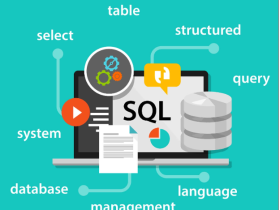Deep learning has revolutionized the way machines process and understand data. It has enabled machines to understand complex patterns and make accurate predictions. However, deep learning algorithms are highly dependent on the quality and quantity of the training data. In most cases, deep learning models are trained on a large dataset, which may not be representative of the target domain. This leads to poor performance when the model is tested on data from a different domain. This is where domain adaptation comes in.
Domain adaptation is the process of adapting a machine learning model to a new domain. There are two main types of domain adaptation: direct and indirect. Direct domain adaptation involves training a model on a source domain and then adapting it to a target domain. Indirect domain adaptation involves training a model on a related task in the source domain and then transferring it to the target domain.
In this article, we will focus on direct domain adaptation in deep learning. We will discuss what it is, why it is important, and how it can be achieved.
Table of Contents
- What is Direct Domain Adaptation?
- Why is Direct Domain Adaptation Important?
- How Does Direct Domain Adaptation Work?
- Popular Methods for Direct Domain Adaptation
- Maximum Mean Discrepancy (MMD)
- Adversarial Domain Adaptation (ADA)
- Domain Adversarial Neural Network (DANN)
- Joint Distribution Alignment (JDA)
- Challenges in Direct Domain Adaptation
- Data Sparsity
- Domain Shift
- Label Shift
- Best Practices for Direct Domain Adaptation
- Applications of Direct Domain Adaptation
- Advantages and Disadvantages of Direct Domain Adaptation
- Future of Direct Domain Adaptation
- Conclusion
- FAQs
What is Direct Domain Adaptation?
Direct domain adaptation is the process of training a machine learning model on a source domain and then adapting it to a target domain. The source domain and the target domain may be different in terms of their data distribution, but they share some similarities. The goal of direct domain adaptation is to leverage these similarities to improve the performance of the model on the target domain.
Why is Direct Domain Adaptation Important?
Direct domain adaptation is important because in real-world scenarios, the training data may not be representative of the target domain. For example, a model trained on data from a laboratory environment may not perform well in a real-world environment. Direct domain adaptation enables us to use the knowledge gained from the source domain to improve the performance of the model in the target domain.
How Does Direct Domain Adaptation Work?
Direct domain adaptation involves three main steps:
- Training a model on a source domain dataset
- Learning the similarities and differences between the source and target domains
- Adapting the model to the target domain using the learned similarities
The goal is to make the model generalize well to the target domain, even though it has not seen any data from that domain during training.
Popular Methods for Direct Domain Adaptation
There are several methods for direct domain adaptation in deep learning. In this section, we will discuss some of the most popular methods.
Maximum Mean Discrepancy (MMD)
MMD is a popular method for direct domain adaptation that measures the distance between the source and target domains. The idea is to find a feature space where the distributions of the source and target domains are similar. This is achieved by minimizing the distance between the mean feature vectors of the two domains.
Adversarial Domain Adaptation (ADA)
ADA is a method that involves training a discriminator network to distinguish between the source and target domains. The goal is to learn a feature representation that is domain-invariant, meaning that the discriminator cannot distinguish between the two domains.
Domain Adversarial Neural Network (DANN)
DANN is a neural network architecture that combines a feature extractor network, a domain classifier network, and a task-specific network. The feature extractor network learns a representation of the input data, while the domain classifier network predicts the domain of the input. The task-specific network performs the main classification task. During training, the domain classifier network is trained to classify the domain of the input as accurately as possible, while the feature extractor and task-specific networks are trained to minimize the classification error. The idea is to learn a feature representation that is both domain-invariant and task-specific.
Joint Distribution Alignment (JDA)
JDA is a method that involves aligning the joint distribution of the source and target domains. The idea is to transform the source and target domains to a common feature space, where the joint distribution is similar. This is achieved by minimizing the distance between the marginal and joint distributions of the two domains.
Challenges in Direct Domain Adaptation
Direct domain adaptation is a challenging problem because there are several factors that can affect its performance. In this section, we will discuss some of the main challenges.
Data Sparsity
Data sparsity is a common problem in domain adaptation, especially when the target domain has limited labeled data. This can make it difficult to learn a good representation of the target domain, which can result in poor performance.
Domain Shift
Domain shift refers to the difference in data distribution between the source and target domains. This can make it difficult to transfer knowledge from the source domain to the target domain.
Label Shift
Label shift refers to the difference in class distribution between the source and target domains. This can make it difficult to learn a model that performs well on the target domain, especially if the class distribution is significantly different.
Best Practices for Direct Domain Adaptation
To achieve good performance in direct domain adaptation, there are several best practices that should be followed. These include:
- Choosing a suitable method based on the problem at hand
- Ensuring that the source and target domains share some similarities
- Using a deep neural network architecture that is suitable for the problem
- Regularizing the model to avoid overfitting
- Using unlabeled data from the target domain to improve performance
Applications of Direct Domain Adaptation
Direct domain adaptation has many practical applications, including:
- Computer vision: adapting models trained on one dataset to work on other datasets or real-world scenarios
- Natural language processing: adapting models trained on one domain (e.g. news articles) to work on other domains (e.g. social media)
- Robotics: adapting models trained in simulation to work in real-world scenarios
Advantages and Disadvantages of Direct Domain Adaptation
Like any machine learning technique, direct domain adaptation has its advantages and disadvantages. Some of the advantages include:
- Can improve the performance of models on target domains
- Does not require labeled data from the target domain
- Can be used in a wide range of applications
Some of the disadvantages include:
- Requires knowledge of the source and target domains
- Performance may be affected by domain shift or label shift
- May be computationally expensive
Future of Direct Domain Adaptation
Direct domain adaptation is an active area of research, and there are many exciting developments on the horizon. Some of the future directions include:
- Developing more robust methods that can handle larger domain shifts
- Integrating domain adaptation into the model training process
- Developing methods that can handle label shift more effectively
- Investigating the use of transfer learning for domain adaptation
Conclusion
Direct domain adaptation is an important technique in deep learning that enables models to be adapted to new domains. In this article, we discussed what direct domain adaptation is, why it is important, and how it can be used in various applications. We also discussed some of the challenges in direct domain adaptation, best practices for achieving good performance, and the advantages and disadvantages of this technique.









Leave a Reply